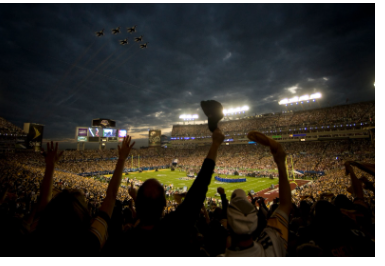Save the Planet Through Shopping
Photo by Tembela Bohle
Assorted shirts hanging on a clothing rack
Fast fashion is a growing issue with new trends coming out faster than ever. To manufacture clothes, the fast fashion industry exports production overseas for cheap labor, and each manufactured item has a handful of consequences on the environment. To help decrease the environmental consequences of fast fashion, secondhand buying items from thrift stores or consignment stores is the best way to change up your wardrobe and still look fantastic without the guilt of destroying the Earth. Secondhand buying is also a great way to save money and support the community.
To manufacture clothing it takes an excessive amount of water and energy. The fast fashion industry is responsible for 20% of the wastewater worldwide (according to this website) and because they outsource labor in other countries, strict environmental regulations are not enforced. The wastewater produced from making clothing contains toxic substances like lead, mercury, and arsenic that end up being dumped into rivers which destroys clean water in that area.
Additionally, mass overproduction of clothes is a bigger problem than many people may think. About 85% of clothes end up in landfills or are burned. The average American throws away about 81 pounds of clothes every year. The clothes that end up in landfills destroy the environment greatly because as the clothing waste decomposes, methane gas and other toxins are released. The negative effects on the environment due to manufacturing and throwing away clothing is why buying secondhand and recycling clothing by donating is so important.
“Buying secondhand is a form of recycling. Most used clothes end up in landfills and a way to reduce that is by buying second hand… each person can reduce their carbon footprint by buying used,” said Kayla Rutt, the manager of a local consignment store in Utah called Uptown Cheapskate.
Uptown Cheapskate is a growing franchise that has stores across the United States. It’s different from a thrift store in that customers can sell their old clothes instead of donating all of them for free. Items that Uptown can’t buy can be donated to charities. This allows trendy items, that are found in the mall, to be sold at a fraction of the price and repurposes clothing so the environment isn’t harmed and unique items can be found.
Buying secondhand is a great way to extend the life of an item and save you tons of money on unique items. Fast fashion stores are constantly changing their inventory at least every four to six weeks if not sooner. And many items are overproduced by fast fashion companies with low-quality materials that end up being trashed into landfills and never worn.
Shopping at places like Uptown allows you and other consumers to find a variety of clothing that may be discontinued in the mall. For instance, good-quality vintage items, that are very trendy right now, aren’t in the mall, but you can find them when thrifting.
“There are so many one-of-a-kind pieces, it’s like treasure hunting. I love that way more than department store shopping, they have so little options. I never shop in the malls or online for clothes anymore,” said Rutt.
Unique items are also a lot cheaper when bought secondhand. Several new clothing items are made with lesser quality materials at outrageous prices. Thrifting allows you to find luxury items at a fraction of the cost.
“Uptown sells items for a third of retail and has sales all the time to be even cheaper. It will save you so much money no matter what you regularly spend…You will love saving money while supporting a local business and charities,” Rutt said.
Furthermore, thrifting supports the community and local businesses. Many thrift stores donate some (or even all) of the money you spend to non-profit organizations. The U.S government offers tax incentives to individuals who donate clothing to some industries like Goodwill and the Salvation Army. This reduces the amount of clothing that would likely end up in landfills and also provides jobs for more people.
Shopping local businesses like Uptown keeps money in your local community. Even the items that aren’t bought get donated to ensure protecting the environment.
As you can see, shopping secondhand is by far the best way to shop because it reduces the impact fast fashion has on the environment. It also benefits you by helping you save tons of money and allows you to give back to the community with a wonderful cause. A great place to begin your journey of thrifting is at Uptown!





